Citrus trees are the best. They adorn the landscape with spots of brilliant greens, yellows, and oranges, they perfume the air with fruit scents, and they’re pleasing to the eye. Just seeing a citrus tree calls to mind tropical climates and sunny neighborhoods in seaside states such as Florida, California, and Texas.
Well, you too can have a taste of the beach even if you live in cold climates, and you don’t need a full-size lemon tree to get there. Dwarf citrus trees can be year-round residents in your hallway, patio, or home garden.
In this guide, we provide eight prime examples of citrus plants that will adapt to your circumstances and provide you with fresh fruit and a tropical sensation.
These miniature fruit trees are perfect for apartments or small homes, and with care, they will grow wherever you want to place them. Our guide to dwarf and semi-dwarf varieties of citrus plants will help you toward a more pleasant and fruit-filled home!

- Easy-to-Grow Small Citrus Trees for Your Home
- When Should I Plant Dwarf Citrus Trees?
- How Do I Grow a Dwarf Lemon Tree or Other Citrus Trees?
- How Do I Care for My Dwarf Citrus Tree?
- Calamondin Orange (Citrus microcarpa) – Delicious Citrus Tree
- Key Lime (Citrus x aurantiifolia)
- Meyer Lemon (Citrus x meyeri) – Dwarf Lemon Tree Extraordinaire
- Tangerine (Citrus tangerina)
- Kumquat (Citrus japonica)
- Bearss Lime (Citrus latifolia) – Ideal Dwarf Citrus Tree
- Clementine (Citrus clementina)
- Owari Satsuma (Citrus reticulata)
Easy-to-Grow Small Citrus Trees for Your Home
Did you only think you could grow fruit trees outdoors? With a little extra attention, you can grow these indoor potted trees easily and have citrus fruit almost year-round.
Take care of the growing conditions and the amount of sun and water they need and you can have a variety of delicious fruit whenever you want it.
Growing citrus trees in pots is ideal for a small space, whether it is a yard or even just a patio or balcony. Trees for tiny yards come in many varieties – fruit trees are only the beginning.
When Should I Plant Dwarf Citrus Trees?
You can begin caring for a dwarf citrus tree indoors at any time of year. If you plan on planting your dwarf shrubs and bushes outside in the yard or on the patio, make sure that the varietal you select will tolerate your climate. If everything checks out, wait until the last frost of the season passes before planting the trees.
Consult your local agricultural agency to find out any unique insect or disease issues that might impact your citrus varieties and take steps to prevent future problems. If spiders are an issue, for instance, consider adding some plants that keep spiders away to your garden as a preventative measure.

How Do I Grow a Dwarf Lemon Tree or Other Citrus Trees?
To start your collection of potted indoor miniature fruit trees, you’ll need to find an area of your home that receives lots of direct sunlight, because citrus trees crave the sun more than just about anything else. You’ll also need to know how to grow a lemon tree.
When you’ve located the perfect location, it’s time to go pot shopping. Find a pot that offers excellent drainage, and make sure to select a potting mix with a pH of about 6 to 7. Citrus trees crave nitrogen, so make sure they get what they want with regular treatments of nitrogen-rich lemon tree fertilizer, which works on all sorts of citrus trees.
If you wish, you can even turn your citrus trees into dangling plants with minimum fuss or effort. Place your dwarf orange tree or other citrus varieties into a sizeable hanging planter to make a fanciful and fun hanging plant that will impress guests and provide them with occasional fruit!
How Do I Care for My Dwarf Citrus Tree?
The key things to be on guard for with dwarf varieties are temperature, water, and sunlight. Of course, every plant needs those to live, but dwarf citrus trees are particularly sensitive to changes in their environment.
They need as much sun as you can provide them, too; citrus trees need six to eight hours of full sunlight every day. If your climate doesn’t give that amount of daily sun, purchase a grow bulb to make sure your fruit trees get enough regular rays.
For them to thrive and bear fruit, dwarf citrus trees need to stay in moderate temperatures. Be sure to keep the tree’s growing area between 55 and 85 degrees Fahrenheit.
Get a moisture meter to avoid overwatering, and use a deep watering method that soaks the roots when you do water your trees. Lastly, try to prevent spider mites from infesting your trees – they can kill them in no time.
Calamondin Orange (Citrus microcarpa) – Delicious Citrus Tree
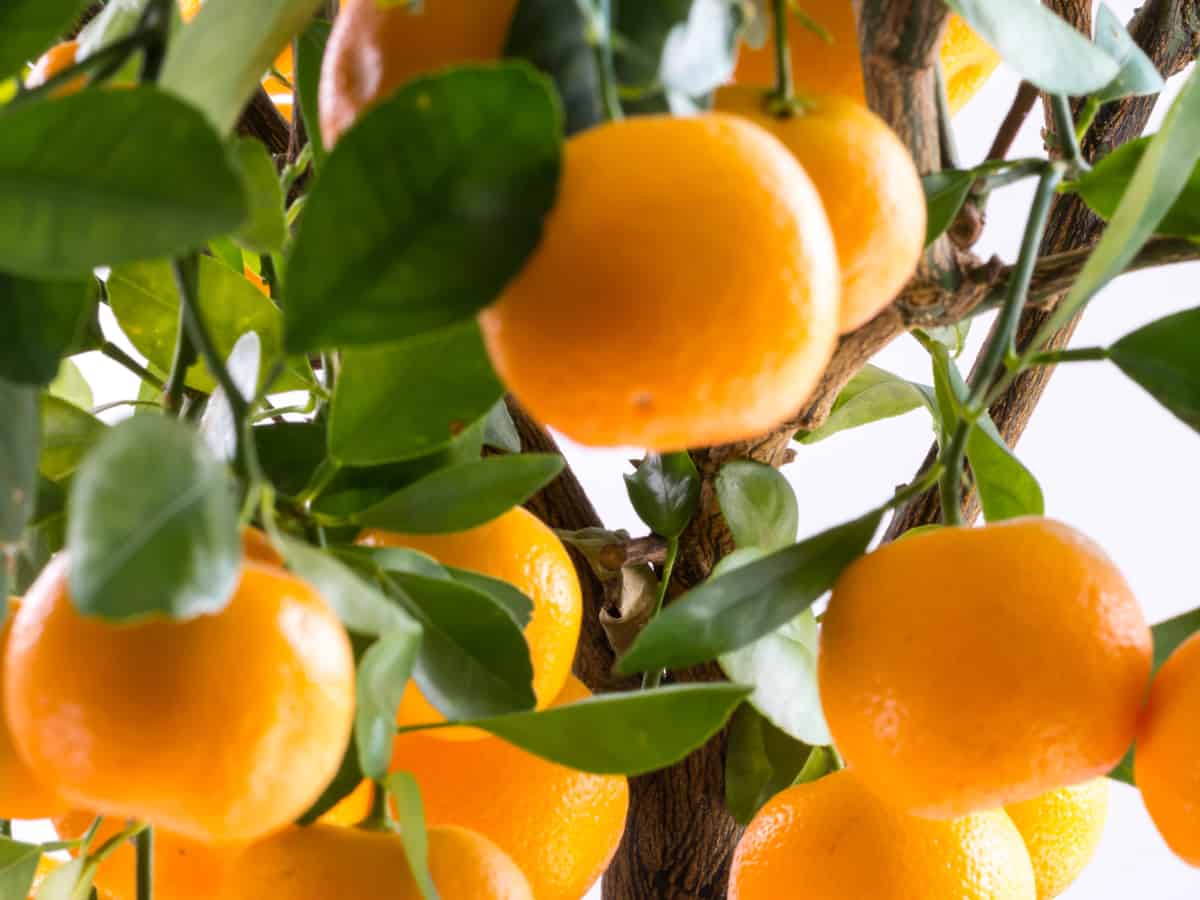
The Calamondin orange tree is a perfect first choice for those who want a fragrant and colorful addition to their life. This dwarf tree produces year-round small orange fruit that is a hybrid of mandarin orange and kumquat, giving them a delicious sweet-and-sour flavor and a marvelous, unique texture.
Growing orange trees and lemon trees are natural methods to eliminate gnats, which is a nice bonus. Bring one of these beauties inside, and you’ll say goodbye to flying critters in your home. The tree should begin to bear fruit when it gets to be about a year old.
Key Lime (Citrus x aurantiifolia)
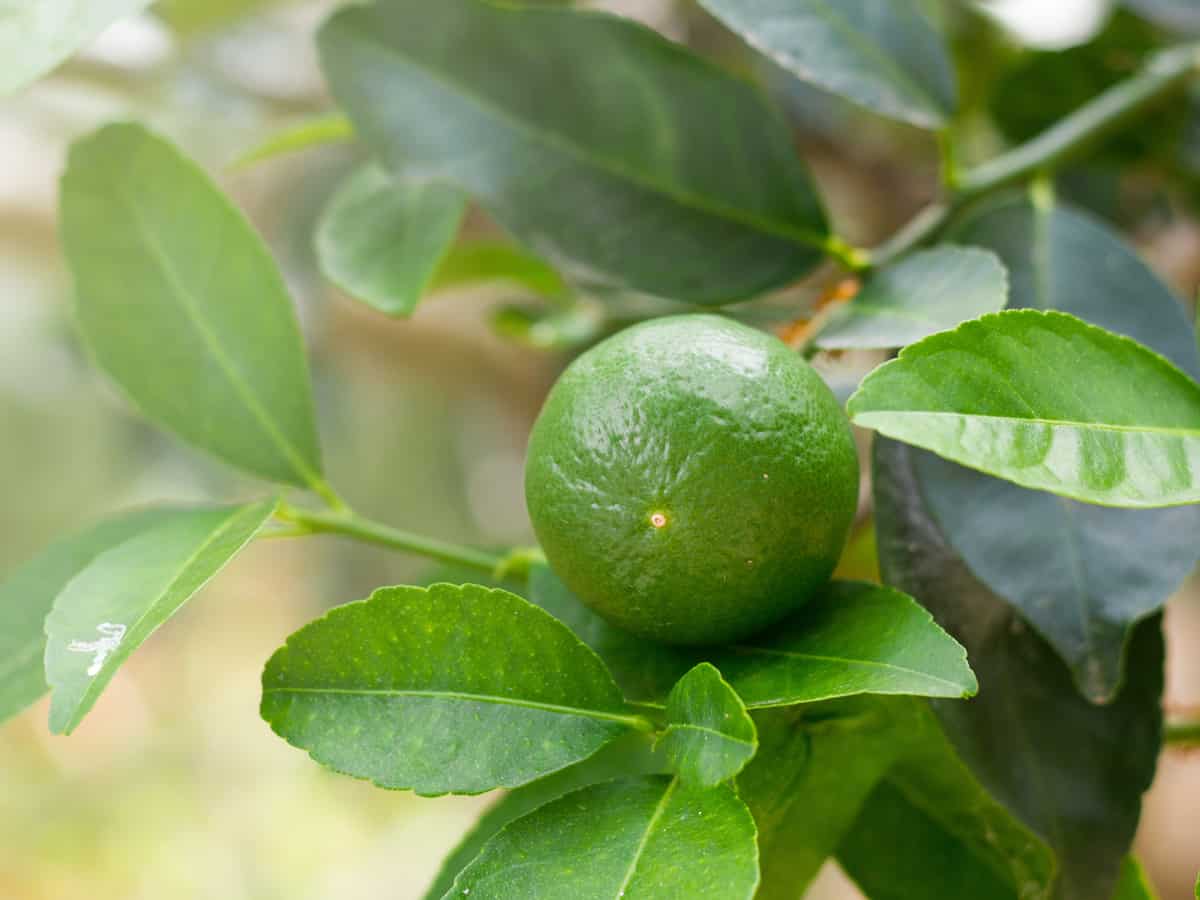
Also called Mexican Lime, the key lime is a classic ingredient of the best pies and the most discerning homes. These small, bushy trees are typically residents of the Florida Keys and Southern California, and they can also be found all over tropical and subtropical regions.
This dwarf lime tree produces fragrant flowers and small, dark green fruit with an astringent, tart flavor. It doesn’t even wait for you to pick the fruit; the key lime tree is prone to multiple blooms, which allows for a staggered harvest and many more sessions of tangy fruit goodness. It is one of the favorite trees that smell good. Plant it and enjoy!
Meyer Lemon (Citrus x meyeri) – Dwarf Lemon Tree Extraordinaire

Those people who want to fill their house with a lovely lemon scent are in luck. There are a wide variety of dwarf lemon trees perfect for indoors, such as the Eureka lemon, but the Meyer lemon tree is as good as it gets.
This squat little citrus plant produces lemons with thin skins and lots of juice, making them a favorite for home cooks everywhere. Be sure to review how to grow a lemon tree before you plant a Meyer lemon tree. Exercise good lemon tree care at all times, including fertilizing, watering, and pruning.
To prune a lemon tree correctly, you should avoid trimming it until it’s two or three years old; the extra time allows the interior of the tree to fill out. As a bonus, lemon trees are one of the plants and trees that repel mosquitoes, whether you plant them indoors or out.
Tangerine (Citrus tangerina)

The tangerine is a mandarin orange hybrid. It produces small, orange citrus fruits with an intense, sweet flavor and firm flesh. Tangerines are great for snacks; those of us with small children are familiar with making tangerines a sweet treat for dessert or between meals.
Dwarf tangerines are usually small trees that can fit in any spare sunlit nook or cranny. Expect to wait up to a year and a half after planting before the tree bears fruit. If grown indoors, plan on the tree bearing year-round fruit. Check out this sweet treat of a citrus plant!
Kumquat (Citrus japonica)
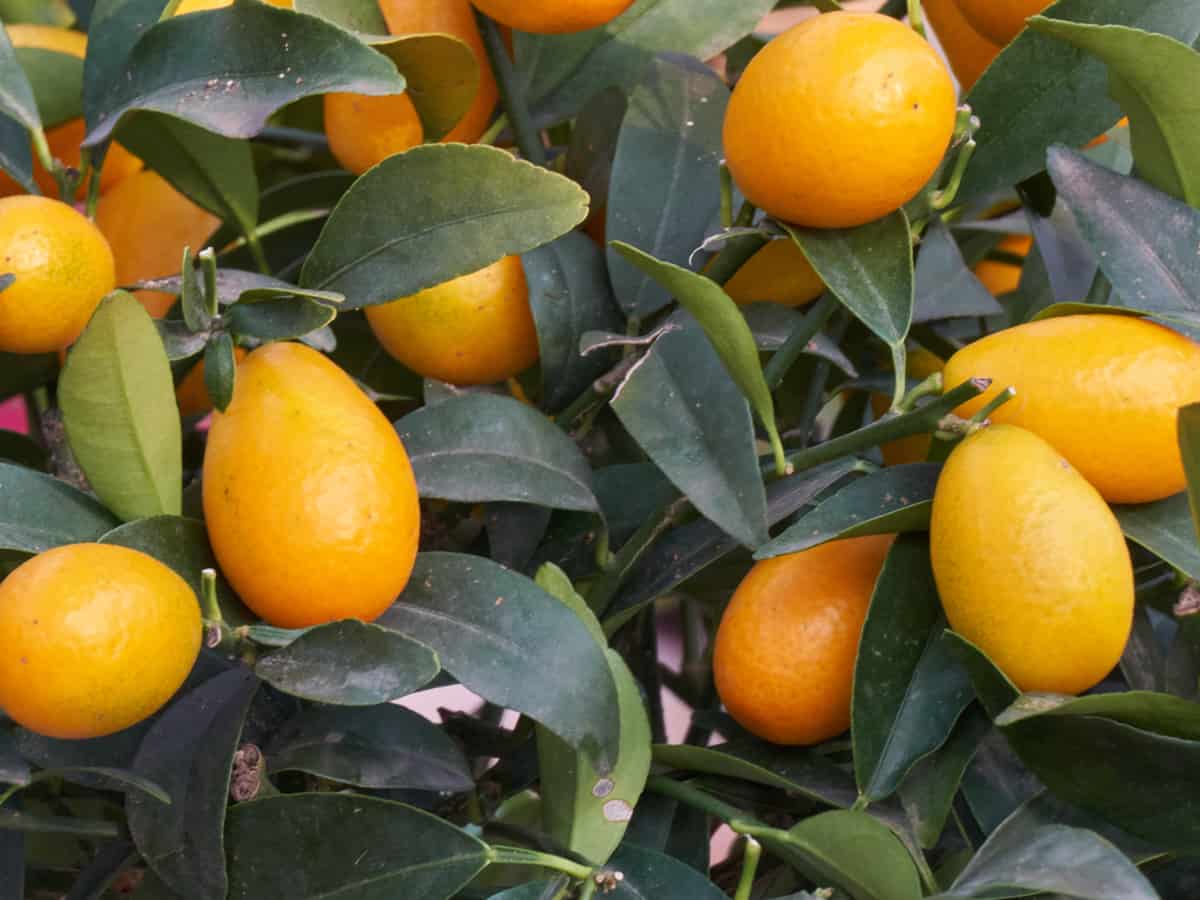
The kumquat tree most resembles an orange tree, but its fruit is smaller and has thinner skin than orange tree fruit. An Asian native, kumquats have been cultivated and are still very popular in many Asian countries, including China, Japan, and the Philippines.
If you live in a cold climate and want to bring your tree outside for part of the year, then the kumquat is the tree for you. Although kumquats are pretty pest resistant, make sure you use a natural spider mite killer if needed.
It’s a cold-hardy tree compared to most citrus trees, and it can handle temperatures as low as 20 degrees Fahrenheit. It does, however, prefer warmer temperatures and does best in a snug indoor room with bright sunlight.
Bearss Lime (Citrus latifolia) – Ideal Dwarf Citrus Tree

Also called the Persian lime and the Tahitian lime, this semi-dwarf citrus tree produces fragrant flowers and small green limes. The limes have the added advantage of being mostly seedless, which is a big help when using the fruit for cooking or making beverages.
Like the dwarf kumquat, the Bearss lime tree can thrive in colder temperatures than some of its brethren. You can keep this tree outside in most coastal areas in the South and Pacific Northwest, including Oregon and Washington. Be sure to keep an eye out for cold snaps, though, and bring in your dwarf lime trees when needed.
Clementine (Citrus clementina)

Like the lemon, there are many different dwarf orange tree varieties from which to choose. Seedless navel oranges are a great choice, as is the sweet and juicy Valencia orange.
But when it comes to small trees that produce fresh orange fruit, you can’t go wrong with the clementine. Clementines are heat tolerant and drought resistant, and its sweet, easy-to-peel, small orange fruit is a favorite with kids.
Best of all, the fruit is nearly seedless! These bite-sized trees fit perfectly in a sunny spot in your apartment or house, and they will please you every time you see them or catch their sweet scent on the breeze.
If you discover bugs on your clementine tree, investigate a natural way to kill mites on plants so that you do not harm the fruit.
Owari Satsuma (Citrus reticulata)
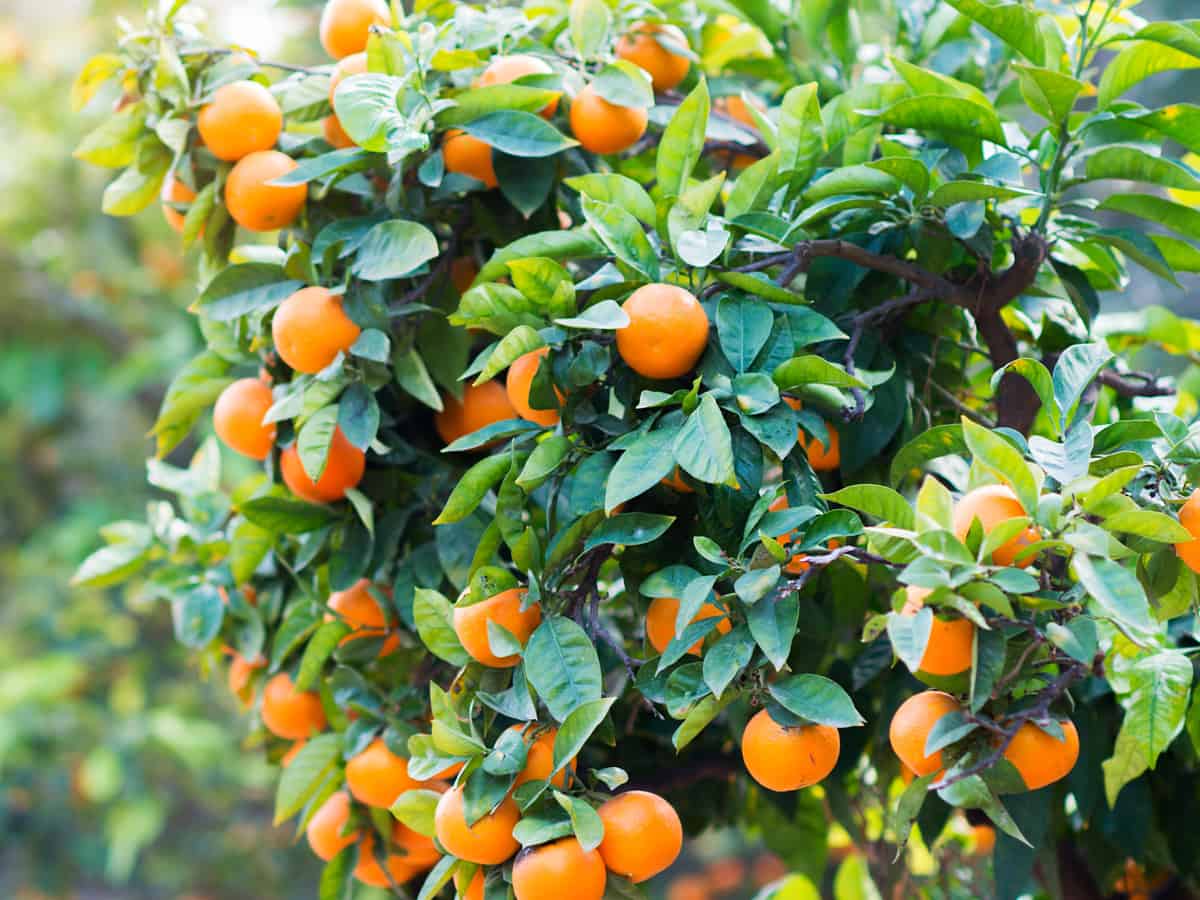
The Owari Satsuma is an ideal dwarf citrus tree for people who want seedless orange in cold climates. This tree is cold-hardy and produces a sweet-scented white bloom, and it yields citrus fruits that are abundant, juicy, and sweet.
Because of its hardy nature, the Owari Satsuma is famous throughout the southern United States. It is highly adaptable as well and will readily take to a variety of soil types.
Additionally, the Owari Satsuma is more pest and disease resistant than other citrus varieties. Take advantage of this marvelous tree, and bring a fresh scent and a touch of color to your home!
We hope that you enjoyed this guide to dwarf citrus trees. Citrus trees are an excellent addition to any home, no matter where that home might be, so it’s important to find the right one for your situation. With our guide, you can be rolling in fresh fruit and lovely fragrances all year long.
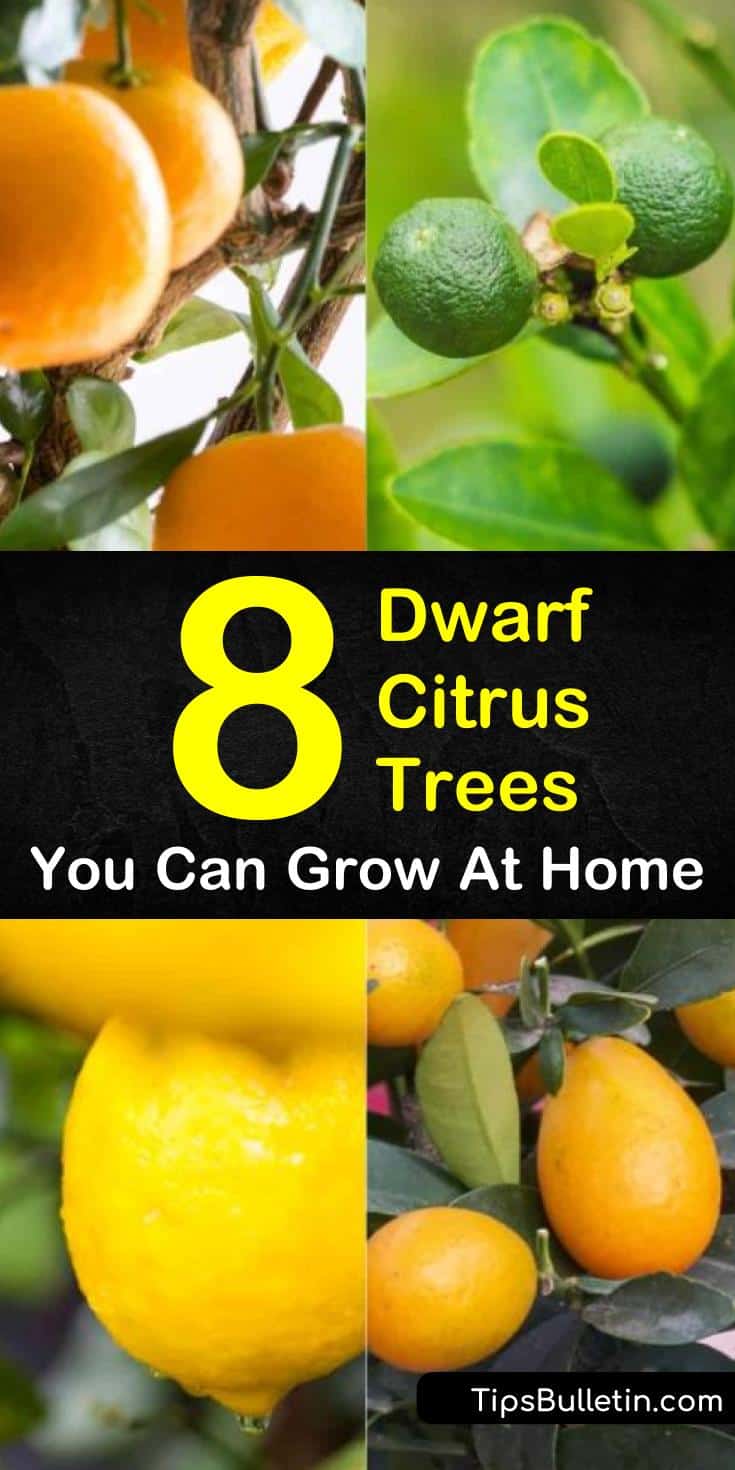
Thanks for reading our guide to dwarf citrus trees. If you found these tip and tricks for finding, planting, and cultivating small citrus trees helpful, please share this dwarf citrus guide with your friends and family on Pinterest and Facebook.